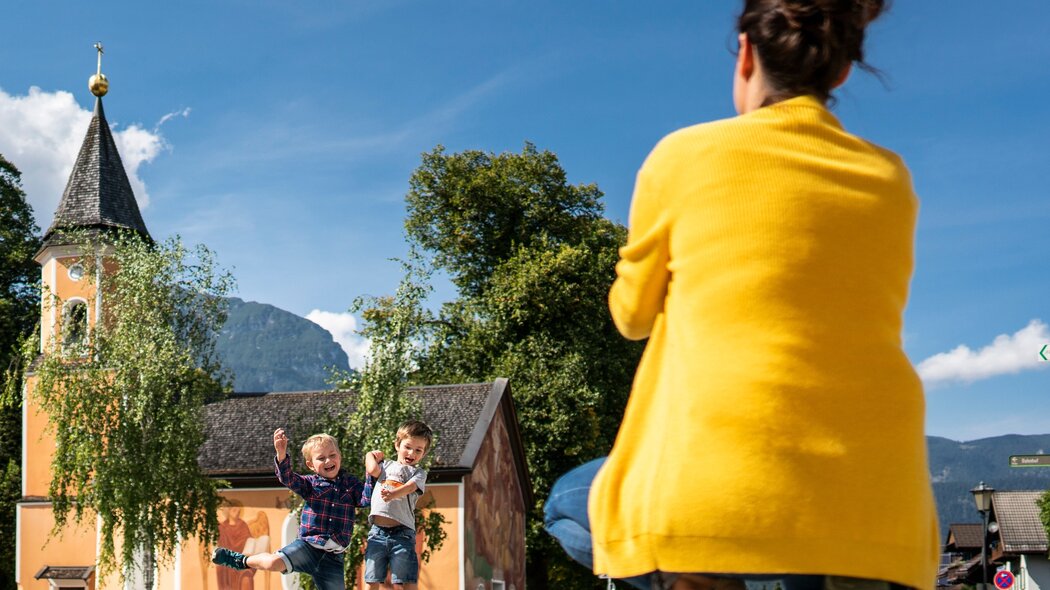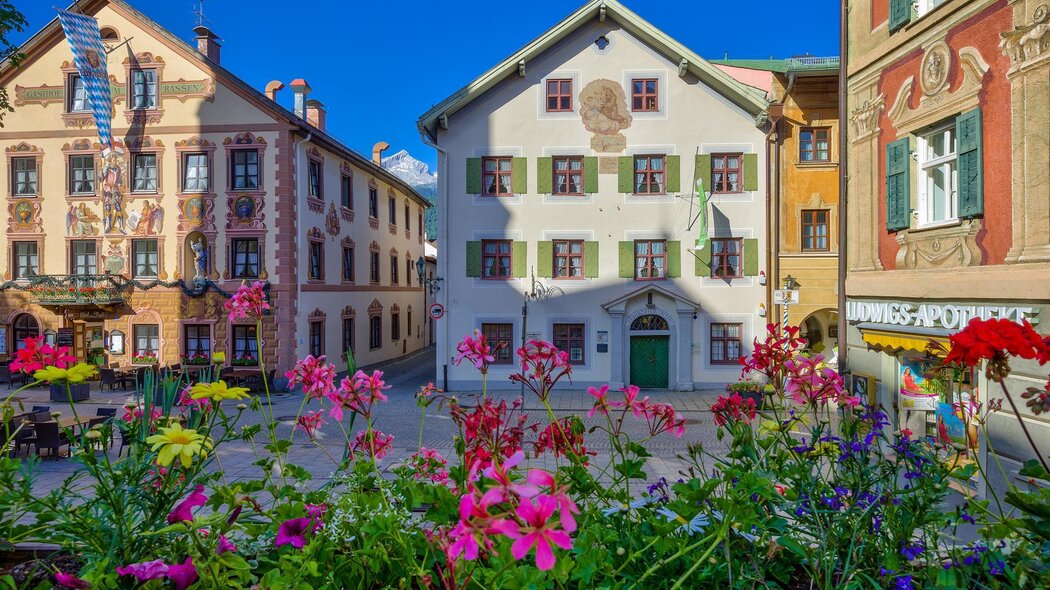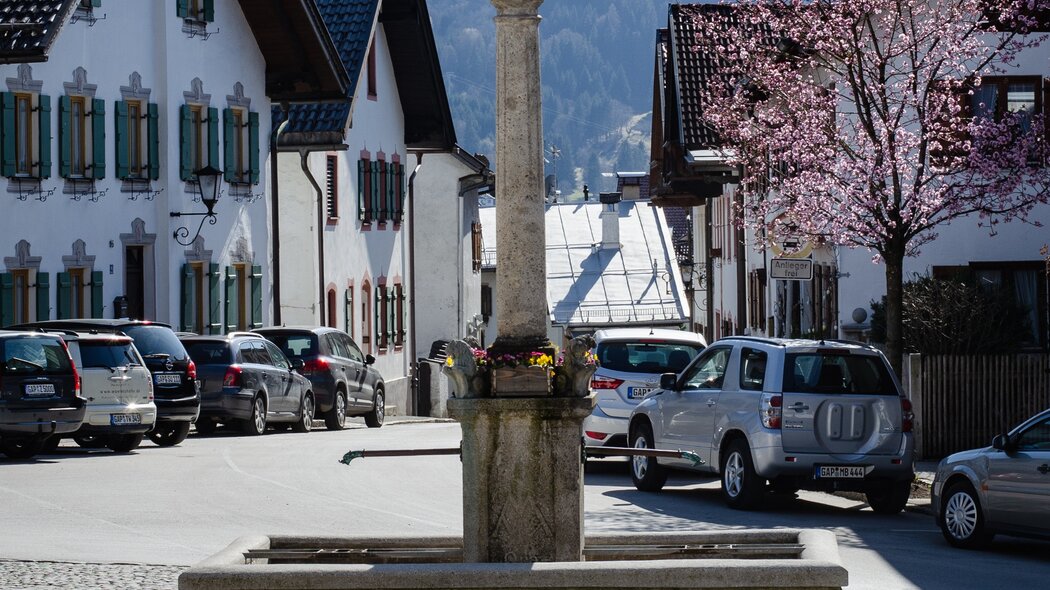Nature Trail
Through Partenkirchen in the footsteps of the Romans
Walking through Ludwigsstrasse, you will see splendidly painted facades, artistic shop and pub signs and even a “golden roof”.
Partenkirchen is the older of the two towns and dates back to a Roman settlement by the road leading, via Brenner Pass, through the Inntal valley, past Seefeld, Scharnitz and Mittenwald all the way to Augsburg.
From the chapel of St. Sebastian, you will pass the part of Ludwigstrasse, which is still known as “Untermarkt” (lower market”) today. The houses here still feature the big gates of the threshing floors. The back part of these houses could not be reached directly, only from the road.
In front of the “Drei Mohren” Inn, at Schäfflerplatz square, there is a beautiful fountain in memory of the barrel-makers. The “Schäffler-Tanz” (dance of the barrel-makers) is not only a Munich tradition, but is also practiced in several communities around the Oberland region, Partenkirchen among them.
When you walk uphill on Sonnenbergstrasse, you first reach the Antonius fountain. If you follow the road to its left, you can go on a detour to the pilgrims’ church of St. Anton. If you stay on Sonnenbergstrasse, you reach the Floriansbrunnen fountain in the square with the same name. The original settlement developed around the Floriansplatz square. It is certain that people lived there, even before the Romans, as they were needed to build roads and had to provide for the soldiers and other people.
In the early 14th century, when the “Rottverkehr”, a type of early haulage business, became popular, Ballengasse and then what is today’s Ludwigstrasse were developed. For the development of the town it was important that they received market rights in 1305
Above Floriansbrunnen fountain, you walk into Faukenstrasse, at the end of which you can see the “Guter Hirte-Brunnen” (Fountain of the Good Shepherd). It was erected in memory of the last person to die of the plague in Partenkirchen, a shepherd boy, who died here.
From Floriansplatz square via Römerstrasse, you get to a narrow path on the right, which takes you to Ludwigstrasse near the Wittman shoe shop, the so called “Fuggergasserl”. Here you can enjoy wonderful views of the town and the Wetterstein mountain range. On your way back, you go past house number 8, the “Altes Haus” (Old House), parts of which are said to date back to the times of Barbarossa (12th century). The painting on the outside walls of the Gasthof Fraundorfer Inn, painted by Heinrich Bickel, show scenes of wedding feasts, the fresco paintings on other houses show trades, farming life and religious scenes. The newly restored parish church of the Assumption of the Blessed Virgin (Maria Himmelfahrt), which was re-built in 1865, is worth a visit. Diagonally opposite, a former merchant’s house from the 17th century is home to the Werdenfels Museum. It reflects the history and culture of the Werdenfels region, living and alive customs on 5 floors. This house was the only one spared by the two large fires in 1863 and 1865. A further building to point out in the row of houses adorned with beautiful paintings is today’s “Post-Hotel”, which used be the post station “Partanum” in Roman times. Now you are back at the “Drei Mohren” inn.
Characteristics
condition
technology
experience
landscape
best seasons
tour in numbers
route
1.5 km
duration
1:15 h
ascent
27 m
descent
23 m
lowest point
709 m
highest point
736 m






